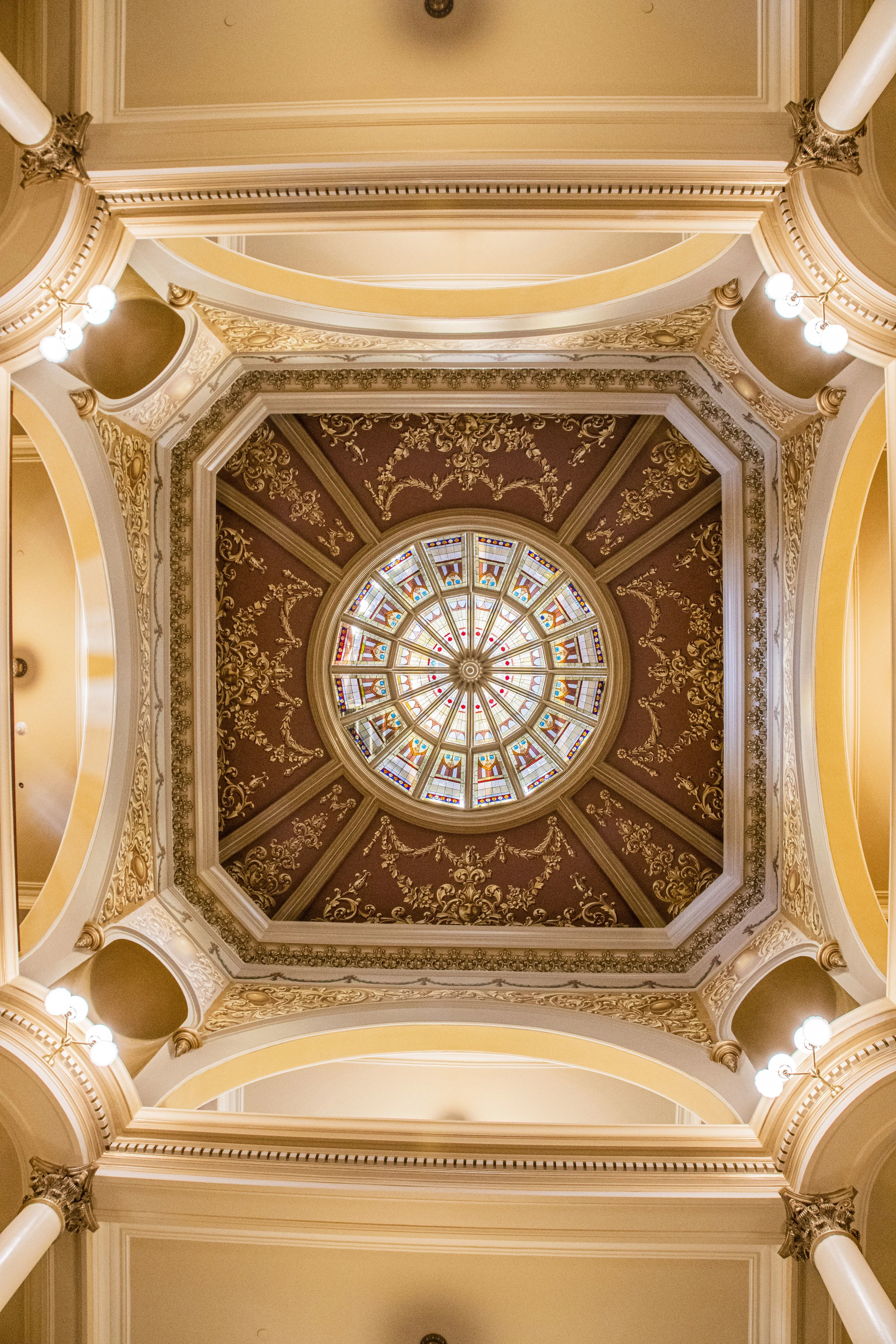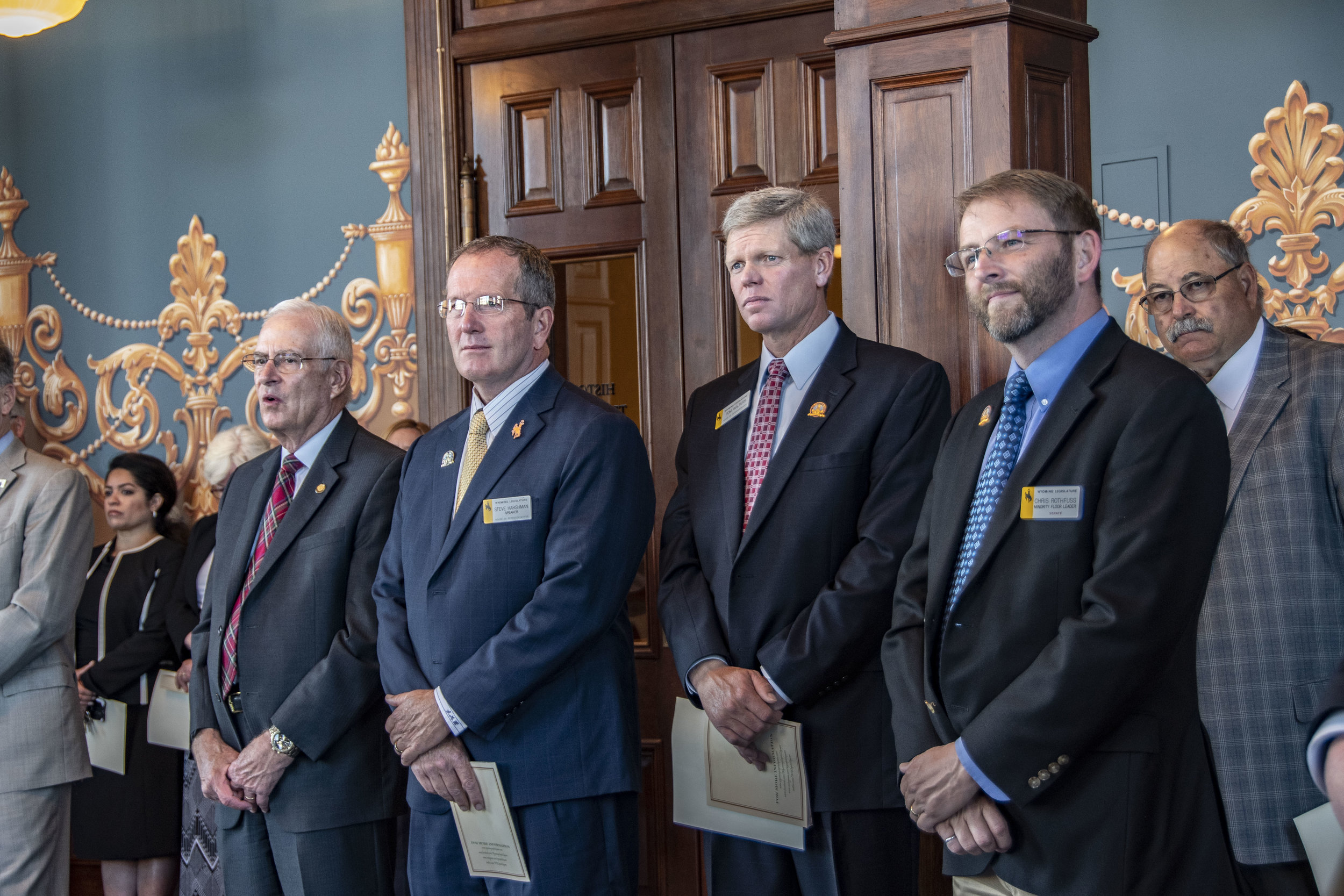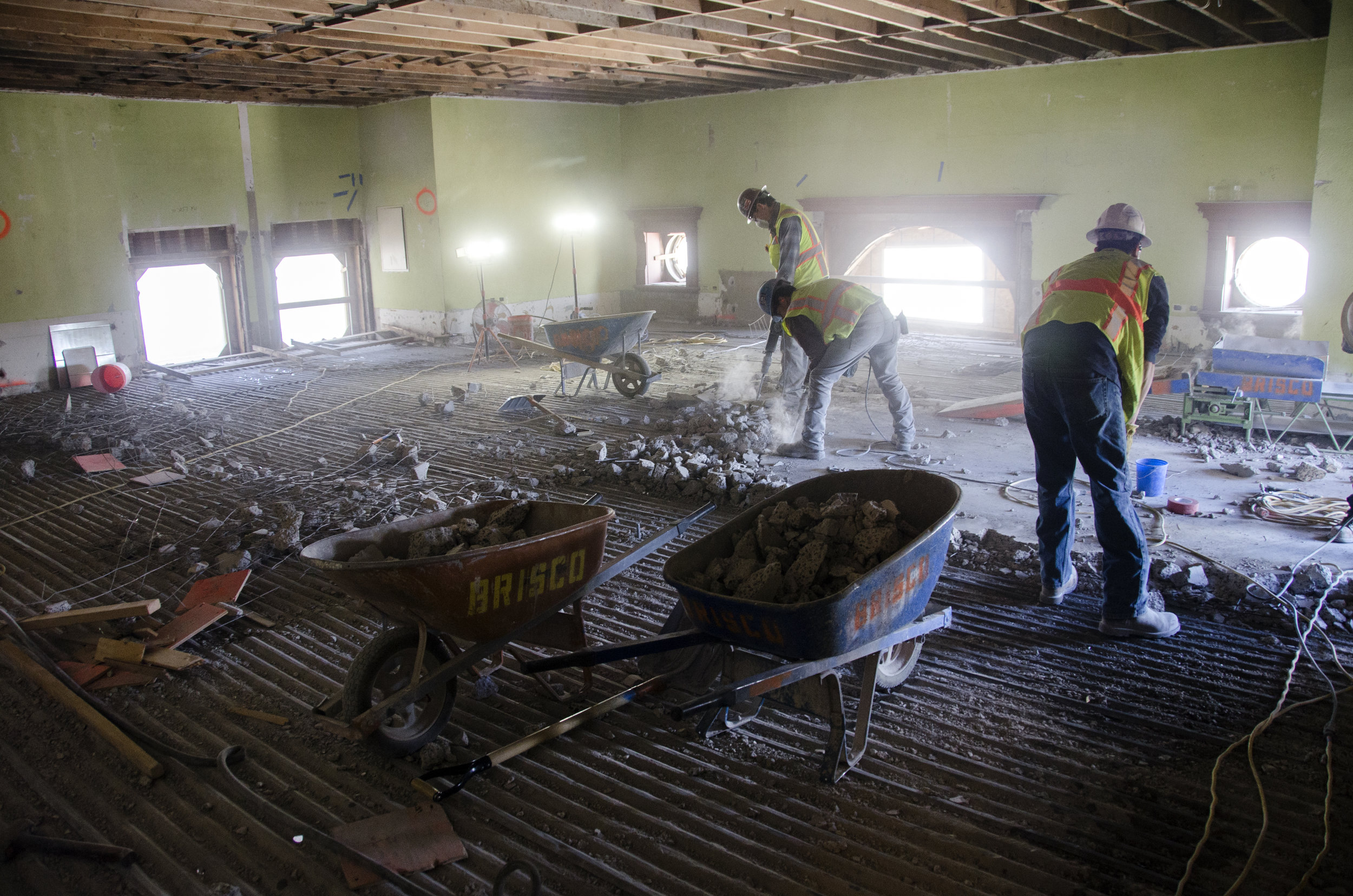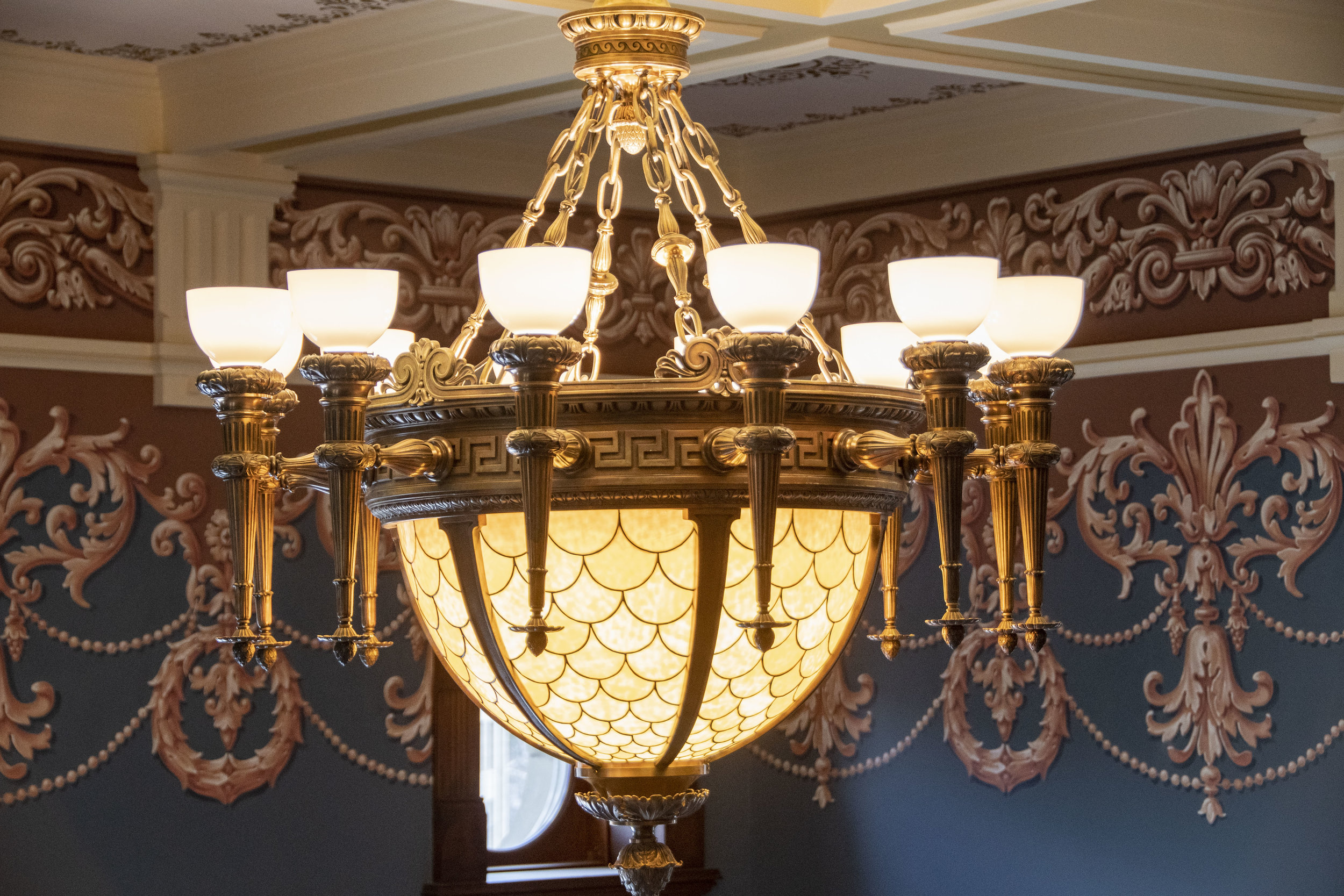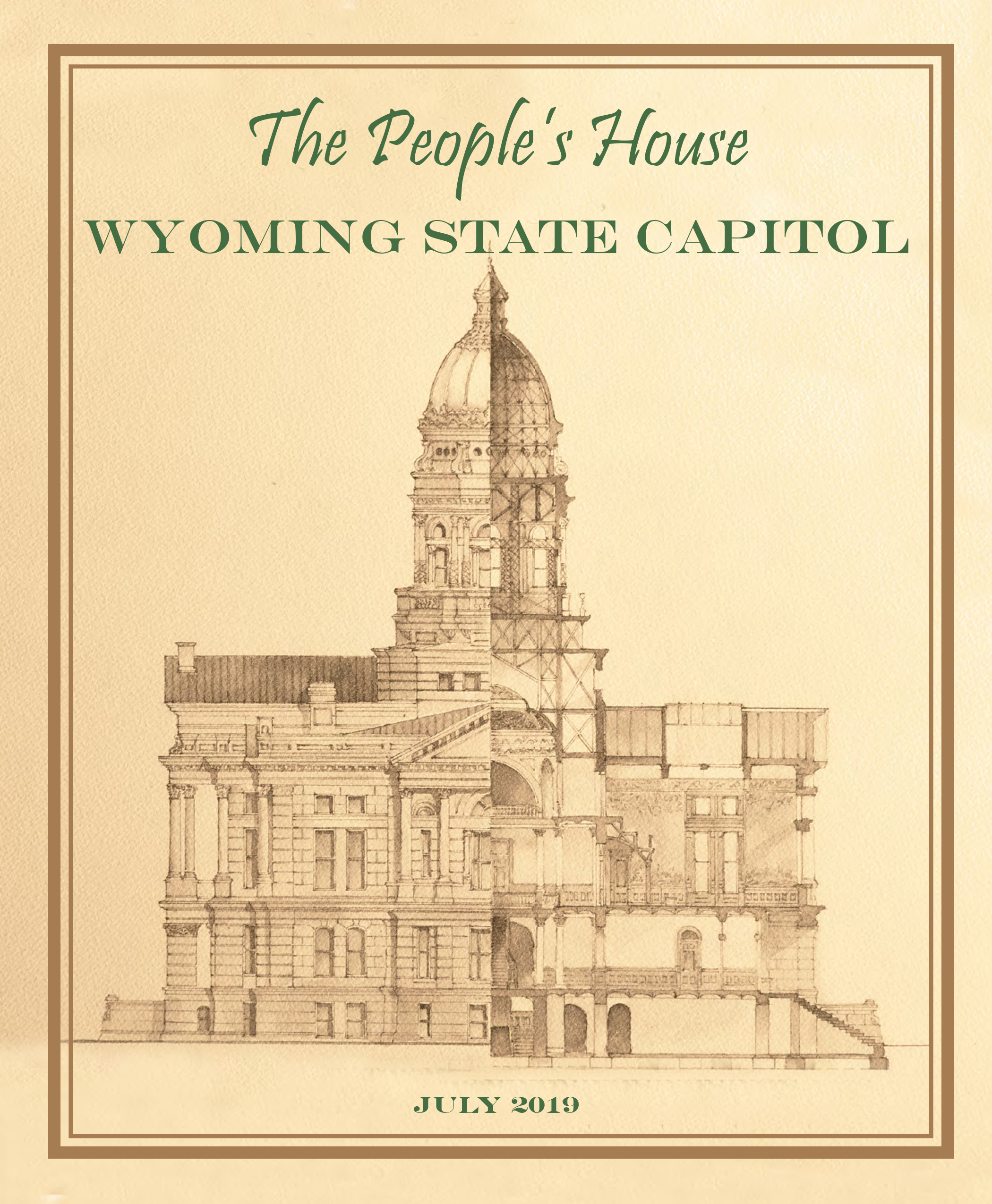Opening of the Historic Supreme Court Room
/Current and former Wyoming Supreme Court Justices held a brief opening ceremony of the Historic Supreme Court Room in the Capitol on July 10. The 1888 Territorial House Chamber was occupied by the Wyoming Supreme Court from 1890 to 1937. No room in the Capitol has been more radically transformed by this project than the Historic Supreme Court Chamber.
The Wyoming State Capitol is one of 20 state Capitols designated as a National Historic Landmark. That designation is largely due to the events that transpired in this Chamber in 1889. As Wyoming was seeking Statehood, the Constitutional Convention was held in this room. A large part of the Convention focused on women’s suffrage, a right Wyoming women had held since 1869. It was in this Chamber that representatives enshrined women’s suffrage within the Wyoming State Constitution, becoming the first state to do so and making this one of the most historically significant chambers in the country.
Click on the photos to enlarge.
The Restoration
The original configuration of the room with a two-story ceiling and second-floor gallery was lost in the 1974-1980 Capitol renovation when the Chamber was divided into two distinct floors. Most recently it served as the Legislative Service Office’s main office on the second floor and legislative library on the third floor.
The Chamber has been returned to its original size by eliminating a partition wall and reclaiming the two-story volume and public balcony. Original features included extensive decorative painting and a stained glass lay light and chandelier, which had been moved in the 1970s but have now been restored to their original location. This magnificent and historic Chamber is now the largest meeting room in the Capitol and will seat approximately 75 members of the public.
The decorative painting in the Supreme Court Room and many other spaces in the Capitol has been restored to match the painting from the original construction. Using patterns discovered during the project and historic photos, artisans recreated the painting.
The most historic rooms and corridors were painted in a style called trompe l’oeil, which means to “fool the eye.” This style of painting creates an illusion of a three-dimensional effect through the use of highlights and shadows in the painting process.
The historic stained glass lay light and chandelier have also been restored.
